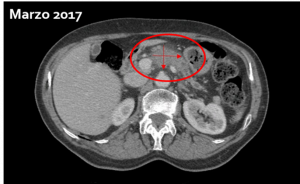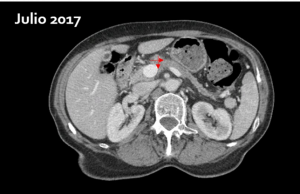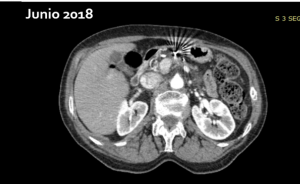Clinical study: Oncothermia as a palliative treatment for pancreatic cancer
Retrospective observational study of 106 patients with pancreatic cancer (pancreatic adenocarcinoma) led by Giammaria Fiorentini M.D., of the Onco-Hematology Department of the “Ospedali Riuniti Marche Nord” Hospital in Pesaro, Italy, treated with Oncothermia.
Pancreatic adenocarcinoma is one of the cancers with the poorest prognosis, resulting in a <10% survival rate at 5 years. Modulated electro-hyperthermia (mEHT – Oncothermia) combines heat-therapy with an electric field and has been increasingly used in cancer therapy alone or in combination with radiotherapy and chemotherapy.
Methods
Based on retrospective data from 170 patients affected by stage III-IV pancreatic adenocarcinoma, 106 were considered for this study. The sample was divided into two groups: 67 patients that did not receive Oncothermia (non-MEHT) and 39 patients that were treated with Oncothermia (mEHT).
Oncothermia (mEHT) was performed using a capacitive coupling technique keeping the skin surface at 26°C and 40-42.5°C inside the tumor for > 90% of treatment duration (40-90 minutes). The applied power was 60-150 Watts. Oncothermia was performed in association with chemotherapy in 32 (82%) of patients whereas 7 (18%) received Oncothermia alone. The majority (54%) of no-mEHT group received a second line chemotherapy, whereas 31 (46%) did not receive any further treatment.
Results
106 consecutive patients were enrolled in this study, median age of the sample was 65 (range 31-80) years.
After three months of therapy, tumor response in Oncothermia group was:
- partial response (PR) in 22 (56%) patients
- stable disease (SD) in 15 (38%) patients
- progression disease (PD) in 2 (5%) patients
Tumor response in no-Oncothermia group was:
- partial response (PR) in 4 (11%) patients
- stable disease (SD) in 11 (31%) patients
- progression disease (PD) in 21 (58%) patients.
The median overall survival (OS) of mEHT group was 17.23 (range 2.6-30.4) and 11,33 months (range 0.4-56.25) for non-mEHT group.
In conclusion, Oncothermia may improve tumor response and survival of pancreatic cancer patients.
More information about the study in the following link.
More information about pancreatic cancer treated with Oncothermia on our website (link) or in the following clinical case.






